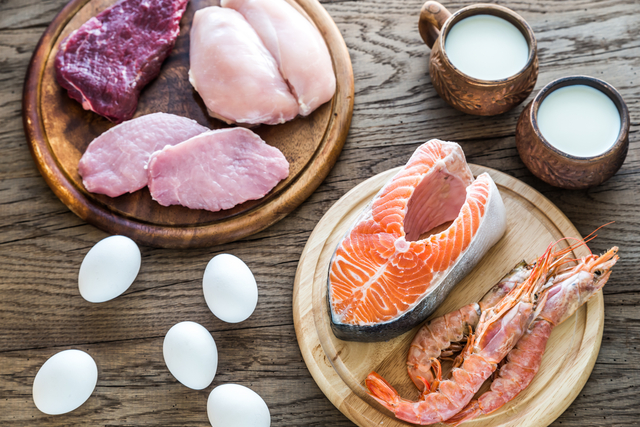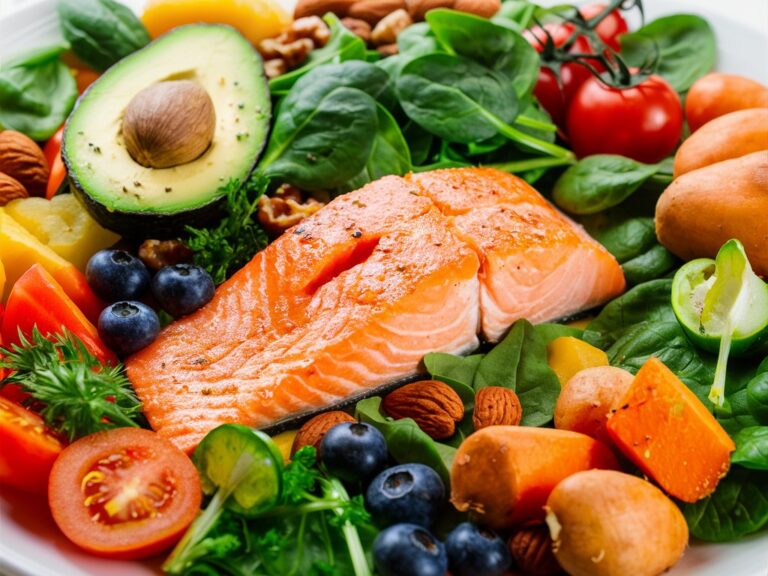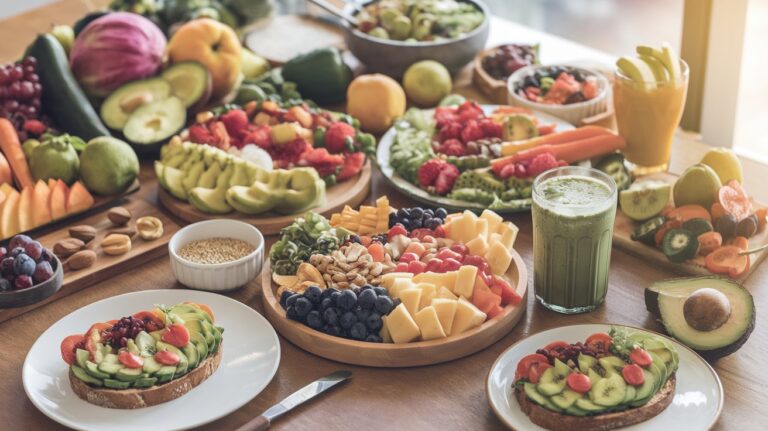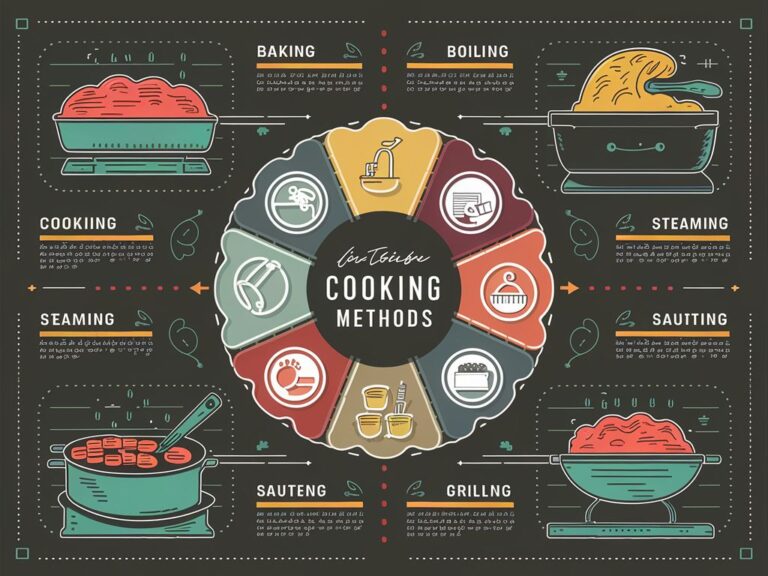Introduction
Welcome to our comprehensive guide on essential Healthy Nutrition Tips for enhancing your overall well-being and energizing your lifestyle.
In today’s fast-paced world, maintaining a balanced diet is key to staying healthy and vibrant. By incorporating these valuable tips into your daily routine, you can unlock the secrets of healthy nutrition and embark on a journey towards a healthier, energized lifestyle.
Understanding the Basics of Healthy Nutrition Tips
Before diving into specific tips, it’s important to understand the basics of Healthy Nutrition Tips. A balanced diet is the foundation of good health and well-being. It provides essential nutrients, vitamins, and minerals that support proper body function and promote overall wellness.
A Healthy Nutrition Tips plan revolves around consuming a variety of nutrient-dense foods from different food groups. These include fruits, vegetables, whole grains, lean proteins, and healthy fats.
Each of these food groups plays a crucial role in delivering the necessary nutrients that our bodies need to thrive.Let’s dive deeper into each component of a balanced diet:
1. Fruits and Vegetables:

Fruits and vegetables are rich in vitamins, minerals, and antioxidants that help protect against chronic diseases and provide overall health benefits.
They should make up a significant portion of your daily meals to ensure a well-rounded diet. Incorporating a colorful assortment of fruits and vegetables into your meals can provide a diverse array of nutrients.
2. Whole Grains:

Whole grains, such as quinoa, brown rice, and whole-wheat bread, are packed with fiber, vitamins, minerals, and antioxidants.
They provide sustained energy, aid in digestion, and help maintain healthy cholesterol levels.
When choosing grains,as Healthy Nutrition Tips, opt for the whole grain versions rather than refined grains, which lack essential nutrients.
3. Lean Proteins:

Lean proteins, including chicken, fish, beans, and tofu, are excellent sources of essential amino acids, which are the building blocks of our bodies.
They promote muscle growth, repair tissues, and regulate various bodily functions. When selecting proteins, opt for lean options to minimize unhealthy fats.
4. Healthy Fats:

Contrary to popular belief, fats are an essential part of a Healthy Nutrition Tips plan.
Healthy fats, such as those found in avocados, nuts, and olive oil, provide valuable nutrients and help support brain health, reduce inflammation, and absorb fat-soluble vitamins.
However, it’s essential to consume them in moderation as they are high in calories.
By incorporating these Healthy Nutrition Tips into your meals, you lay the foundation for a well-rounded and nutritious diet. The next section will guide you on building a nutritious plate and incorporating antioxidant-rich foods into your meals.
| Food Group | Examples |
|---|---|
| Fruits and Vegetables | Apples, spinach, carrots, berries |
| Whole Grains | Quinoa, brown rice, whole-wheat bread |
| Lean Proteins | Chicken breast, fish, beans, tofu |
| Healthy Fats | Avocado, nuts, olive oil |
Building a Nutritious Plate
To achieve a healthy and balanced diet, it’s crucial to build a nutritious plate that includes foods from various food groups. Incorporating a wide range of nutrient-dense options not only provides essential vitamins and minerals but also ensures your body gets the necessary energy for optimal functioning.
In this section, we will delve into the key elements of constructing a Healthy Nutrition Tips plate and emphasize the importance of incorporating antioxidant-rich foods into your daily meals.
1. Include a Variety of Food Groups
Building a nutritious plate begins with including a variety of food groups in each meal. By using these Healthy Nutrition Tips and incorporating foods from different groups, you can benefit from a diverse range of nutrients necessary for overall health. Aim to include:
- Fruits: These are rich in vitamins, minerals, and dietary fiber. Opt for fresh, whole fruits whenever possible.
- Vegetables: Choose a variety of colorful vegetables to maximize the intake of vitamins, minerals, and antioxidants.
- Whole Grains: Opt for whole grain bread, rice, pasta, and cereals to ensure a good source of fiber and essential nutrients.
- Lean Proteins: Include sources like poultry, fish, lean meat, eggs, legumes, and tofu to provide essential amino acids for tissue repair and growth.
- Dairy or Dairy Alternatives: For calcium, choose low-fat milk, yogurt, or plant-based alternatives fortified with calcium.
- Healthy Fats: Incorporate sources such as avocados, nuts, seeds, and olive oil to provide essential fatty acids.

2. Emphasize Antioxidant-Rich Foods
A crucial aspect of a nutritious plate is the inclusion of antioxidant-rich foods. Antioxidants help protect your body against oxidative stress, which can contribute to chronic diseases and aging. Some excellent sources of antioxidants include:
- Dark leafy greens: Spinach, kale, and Swiss chard are packed with antioxidants like vitamins A, C, and K.
- Berries: Blueberries, strawberries, and raspberries are rich in anthocyanins, which provide potent antioxidant benefits.
- Colorful fruits: Incorporate oranges, grapes, and pomegranates to benefit from their high antioxidant content.
- Nuts and seeds: Almonds, walnuts, chia seeds, and flaxseeds are packed with antioxidants and healthy fats.
- Dark chocolate: Indulge in high-quality dark chocolate with a high cocoa content to enjoy its antioxidant properties.
By incorporating these Healthy Nutrition Tips and antioxidant-rich foods into your meals, you can promote overall health and well-being while enjoying delicious and satisfying dishes.
Achieving Balanced Macronutrients
When it comes to Healthy Nutrition Tips, achieving a balance of macronutrients is essential. Macronutrients, which include carbohydrates, proteins, and fats, provide the body with the energy it needs to function properly.
The Importance of Carbohydrates
Carbohydrates are the body’s primary source of energy. They are found in foods like fruits, vegetables, whole grains, and legumes. Including a variety of carbohydrates in your diet can provide a steady source of energy throughout the day.
The Role of Proteins
Proteins are crucial for building and repairing tissues, as well as maintaining a healthy immune system. Good sources of protein include lean meats, poultry, fish, eggs, dairy products, and plant-based protein like beans and tofu.
Fat: The Good and the Bad
Fat often gets a bad rap, but it plays a vital role in our bodies. Consuming healthy fats, such as those found in avocados, nuts, seeds, and olive oil, can provide essential fatty acids that support brain function and promote heart health.
It’s important to limit the intake of saturated and trans fats, found in processed foods and fatty meats, as they can increase the risk of heart disease.
Creating a balanced macronutrient plan involves incorporating appropriate portions of carbohydrates, proteins, and fats into each meal. The aim of these Healthy Nutrition Tips is to ensure that your body receives the right nutrients in the right proportions, supporting optimal health and well-being.
The Role of Micronutrients

Micronutrients, including vitamins and minerals, are essential for maintaining overall health. While macronutrients such as carbohydrates, proteins, and fats provide energy and serve as the building blocks of our bodies, micronutrients play a crucial role in supporting various bodily functions, such as metabolism, immune function, and tissue repair.
Getting enough micronutrients is vital to keep our bodies functioning optimally. Here are some tips to ensure you’re incorporating micronutrients into your Healthy Nutrition Tips plan:
Include a variety of fruits and vegetables in your diet:
Fruits and vegetables are packed with essential vitamins and minerals. Aim to incorporate a colorful array of produce into your meals and snacks to ensure you’re getting a wide range of micronutrients.
Choose whole grains:
Whole grains like brown rice, quinoa, and whole wheat bread provide essential B vitamins and minerals like iron and magnesium. Swap refined grains for whole grains to boost your intake of micronutrients.
Include lean proteins:
Lean proteins such as poultry, fish, tofu, and legumes not only provide valuable macronutrients but also contain micronutrients like iron, zinc, and vitamin B12. Incorporate these protein sources into your meals to meet your micronutrient needs.
Don’t forget about dairy or dairy alternatives:
Dairy products like milk, yogurt, and cheese are excellent sources of calcium and vitamin D. If you follow a dairy-free diet, opt for fortified plant-based alternatives to ensure you’re meeting your micronutrient requirements.
Consider supplementation:
While it’s best to get micronutrients from whole foods, sometimes supplementation may be necessary to ensure you’re meeting your needs. Consult with a healthcare professional or registered dietitian to determine if supplementation is right for you.But supplements still one of the best Healthy Nutrition Tips that you can try.
Common Micronutrients and Their Functions
| Micronutrient | Function |
|---|---|
| Vitamin C | Supports immune function and collagen synthesis. |
| Vitamin D | Aids in calcium absorption for bone health. |
| Iron | Carries oxygen in the blood and supports energy production. |
| Calcium | Essential for bone health and muscle function. |
| Magnesium | Plays a role in over 300 enzymatic reactions in the body. |
Making Smart Food Choices
Making smart food choices is essential for maintaining a Healthy Nutrition Tips plan. By understanding how to read food labels, identifying healthier options, and avoiding common pitfalls, you can make informed decisions that support your well-being.
Reading Food Labels
When grocery shopping, take the time to read and understand food labels. Here are a few key points to consider:
- Check the serving size to ensure you’re accurately assessing the nutrients you consume.
- Review the ingredient list to identify any additives, preservatives, or unwanted substances.
- Pay attention to the nutrition facts panel, focusing on calories, fat, sugar, and sodium content.
Identifying Healthier Options
Incorporating nutritious foods into your diet is vital for overall health. Here are some tips for choosing healthier options:
- Select whole foods such as fruits, vegetables, whole grains, lean proteins, and healthy fats.
- Opt for minimally processed or unprocessed options to avoid added sugars, unhealthy fats, and excessive sodium.
- Consider organic or locally sourced products when possible to support sustainable agriculture and minimize pesticide exposure.
Avoiding Common Pitfalls
When striving for a Healthy Nutrition Tips plan, it’s important to be aware of common pitfalls and avoid them:
- Avoid excessive consumption of sugary beverages like soda and fruit juices.
- Limit your intake of processed foods that are often high in unhealthy fats, added sugars, and sodium.
- Be cautious of fad diets that promise quick results but may be unsustainable or lacking essential nutrients.
By being mindful of your food choices and applying these strategies, you can make smart decisions that promote healthy nutrition and contribute to your overall well-being. Remember, small changes can yield significant benefits in the long run.
Conclusion
In conclusion, prioritizing healthy nutrition is essential for overall well-being. By following the tips outlined in this article, you can unlock the secrets of healthy nutrition and embark on a journey towards a healthier, energized lifestyle.
Building a nutritious plate by incorporating a variety of foods from different food groups, including antioxidant-rich foods, is a key step in achieving a balanced diet. Additionally, understanding the importance of macronutrients such as carbohydrates, proteins, and fats, and finding a balance among them is crucial.
Remember that micronutrients, such as vitamins and minerals, also play a vital role in maintaining your health. Ensuring you’re getting enough of these micronutrients is necessary for your body to function optimally.
Finally, making smart food choices by reading food labels, identifying healthier options, and avoiding common pitfalls will contribute to your overall well-being. Start making positive changes to your diet today and experience the benefits of Healthy Nutrition Tips firsthand!
FAQ
Q1: What is healthy nutrition?
Healthy nutrition refers to a balanced and varied diet that provides essential nutrients, vitamins, and minerals to support overall well-being.
Q2: How can Healthy Nutrition Tips enhance my well-being?
Healthy Nutrition Tips provides the fuel needed for optimal physical and mental performance, supports a strong immune system, helps maintain a healthy weight, and reduces the risk of chronic diseases.
Q3: Why is understanding the basics of healthy nutrition important?
Understanding the basics ofHealthy Nutrition Tips enables you to make informed food choices and create a balanced diet that meets your nutritional needs.
Q4: How do I build a nutritious plate?
Building a nutritious plate involves including a variety of foods from different food groups, such as fruits, vegetables, whole grains, lean proteins, and healthy fats.
Q5: Why should I include antioxidant-rich foods in my diet?
Antioxidant-rich foods help protect the body from harmful free radicals, reduce inflammation, and support overall health. Examples of antioxidant-rich foods include berries, leafy greens, and nuts.







Wow, superb weblog format! How long have you ever been running a blog for?
you make blogging look easy. The entire look of your website
is fantastic, let alone the content! You can see similar here sklep online